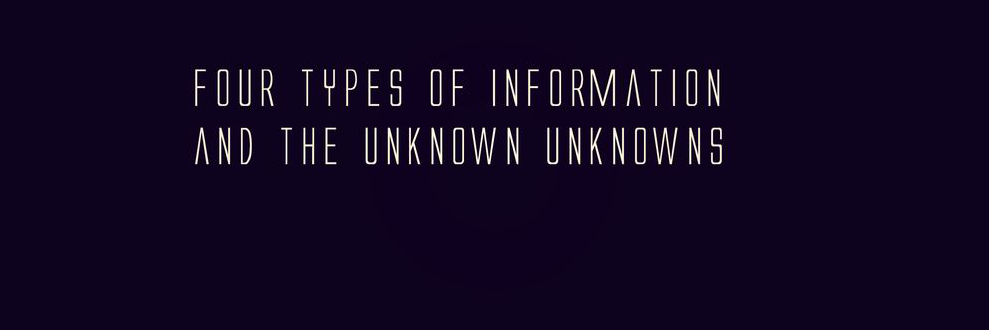A string of new projects. Unfamiliar clients. New people and working styles. Unknown unknowns.
Assuming an approach that worked for one set of information will work for the next combination is a dangerous path. Just because you have a hypothesis doesn’t mean it’s true. The first step to strategy is to know that you know nothing.
I was in Texas recently, talking about Donald Rumsfeld and his “unknown unknowns” quote, and the categorization of information.
Four categories of information:
1. Known knowns. What you know you know.
2. Unknown knowns. What you know you should know.
Data that exists, but we must obtain. With luck, this becomes a known known.
3. Known unknowns. What you know you don’t know.
What we know we must discover. With effort, this becomes a known known.
4. Unknown unknowns. Unanticipated but relevant data, revealed unexpectedly.
Information revealed in an order that could not have been predicted using known data.
So how do we visualize this?
Attempt I.

Attempt II.

Attempt III.

Attempt III’s going to make a glorious Post-It board.
xo,
suzymae

